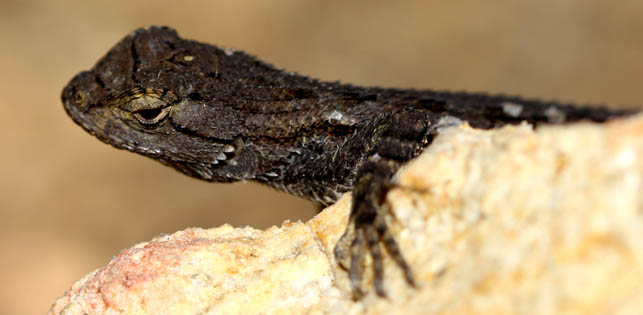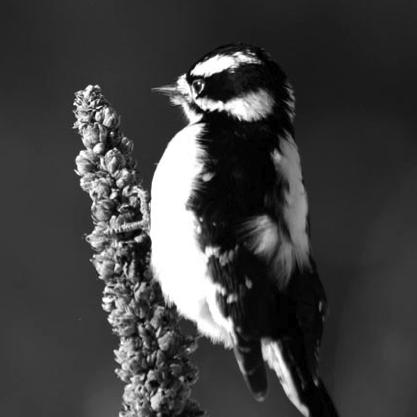Use #3 for a stick: Catch a lizard
 Miniature dinosaurs. Adorable, and common. Ever wanted to see one up close? Feel its little heartbeat, stroke its leathery sides? I am here to help you achieve this life long dream.
Miniature dinosaurs. Adorable, and common. Ever wanted to see one up close? Feel its little heartbeat, stroke its leathery sides? I am here to help you achieve this life long dream.
You may not know this, but lizard experts the world over use sticks and dental floss to catch lizards. Very high tech stuff. Today I’m going to share with you their technique. I’m sure it is a highly guarded secret, and if you don’t hear from me by Monday, know that a branch of the C.I.A. has likely locked me away somewhere for divulging this information.
What you’ll need:
A long skinny stick; willow is good because it has a little bend to it, but any long stick will work. Something between two and three feet long.
Some dental floss. Fishing line also works, but it is a little harder to release the slip knot—I prefer a thicker line so that I can get it off the squirming lizard more quickly. You can also experiment with thicker cord (something like weed-whacker cord) and the alternate technique listed below.
METHOD ONE:
- Tie a slip knot in your dental floss, leaving a tail roughly seven inches long on the ‘slipping’ side. Not sure how to tie a slip knot? Here are directions.
- Tie that seven inch tail (the slipping end) to the thinner end of your stick, so that the loop hangs between four and six inches from the end of the stick.
- You’re ready to go!
METHOD TWO:
- Tie a bowline or square not in a thicker piece of cord. Leave a tail that is longer than the length of your stick. Not sure how to tie a bowline? Here are directions. Square knot? Here ya’ go.
- A bowline creates a loop that is of a fixed size. Now you can thread the tail of your cord through this fixed-size loop. This creates a slip knot that a) comes undone much more easily than a regular slip knot and b) can be tightened and loosened by pulling or pushing on the end you’ve threaded through the loop.
- Tape or tie the bowline knot to the VERY END of your stick.
- You’re ready to go!
HOW TO CATCH A LIZARD:
First, a few caveats. Lizards are durable creatures, but as tiny animals, they require care and a gentle touch. The point is to learn to appreciate lizards by touching them and observing them up close, not to harm or traumatize them. As such, never squeeze your lizard too tightly, never hold it by a leg or by the tail, and be sure to remove the noose as quickly as possible so that they don’t struggle for too long. You’ll find that most lizards respond to the warmth of your hands and slow movements by relaxing; many may not want to leave your hand once you’re ready to let them go!
The best time to catch lizards is early in the day; before they’ve had a chance to warm up, they move slowly and are often found dozing on rocks in the sun. Keep your lizard-stick over the top of the lizard, starting up very high, and bring the noose down towards their heads slowly. Move the stick as if it were blowing gently in the breeze. A lizard may be paying more attention to you than to the noose, making your job even easier. If they notice the noose, many will bite at it, testing whether or not it is an edible bug. Gently place the noose around their neck and give a subtle tug (or with method two, pull gently on the long string to cinch the noose). Done! Quickly bring the lizard close to your body and support it in your hand. The lizard will be struggling at first (who wouldn’t, they were just napping in the sun and now are flailing in the air like a Cirque de Soleil acrobat!) A thumb on their backs, with your other fingers under their body is a good way to hold them. Remove the noose and stroke their sides, and the bridge of their noses. Most lizards will calm down right away.
One final lizard-catching method. If you’re out in the field, and don’t have any dental floss or bits of string to make a quick noose, try using a long blade of grass—the stem, not the leaf. Chew the tip a little and moisten it with your spit. Then loop it on itself and tie a slip knot. It will be stiff, but the weight of the lizard will pull it taught all the same. These are nice because you can very quickly break the stem to release the lizard.
Warning! Most lizards don’t bite, and in all of my lizard catching I’ve never been bitten, nor has a lizard ever tried. But I would be remiss not to warn you: two groups are reported to be more vicious than the rest: Leopard lizards, and Collared lizards should be handled with care. I’ve handled many collared lizards, and never once has one tried to bite me—they seem rather gentle. But who am I to go against word on the street?
Want to tell your kids some interesting lizard facts? Here are a few good resources:
Great little fact sheet on lizards
Lizard Families found in the U.S., with some natural history information.
Guide to lizards in the U.S., with pictures and information about distribution, size, etc.





7 Comments so far
Comments Feed
This is awesome. My son will be amazed when I show him this when we’re in southern UT in a few weeks. I always wondered how regular people were fast enough to catch lizards. Now I know it’s not just being fast, it’s being smart! Thanks!
Bring the kids: OOOOOHHHHH. Southern Utah. Jealous. Very jealous. Lots of good lizards there! Can’t wait to hear about how your son grows a new respect for his mother after she lassoes a lizard! Additional tip: regular people who catch lizards will tell you that the secret is to move slow slow slow until you’re touching them. Good luck!
Fun! Though I can say that I’ve been “bitten” by many lizards (in Puerto RIco)–if you can call it biting. More like a brief pinch with the mouth…nothing to worry about with most of them. Carribean lizards must have more attitude than western lizards. 😉
Chastity – Hahaa. I can see that about those Caribbean dwellers! Did you have Iguanas there?
We did! There is even an iguana called the Puerto Rican Iguana which you only find on the island. It was kind of startling sometimes to see the very large Green Iguanas. You’d be looking into a bush or tree, and suddenly there it was right in front of you, staring at you. They are well-camouflaged in their natural environment!
[…] have yet to actually catch a fish with it… I’ve used the fishing line and a stick to snare a lizard though! Easiest way to store the fishing line is to wrap it around the pen and secure it with […]
cool